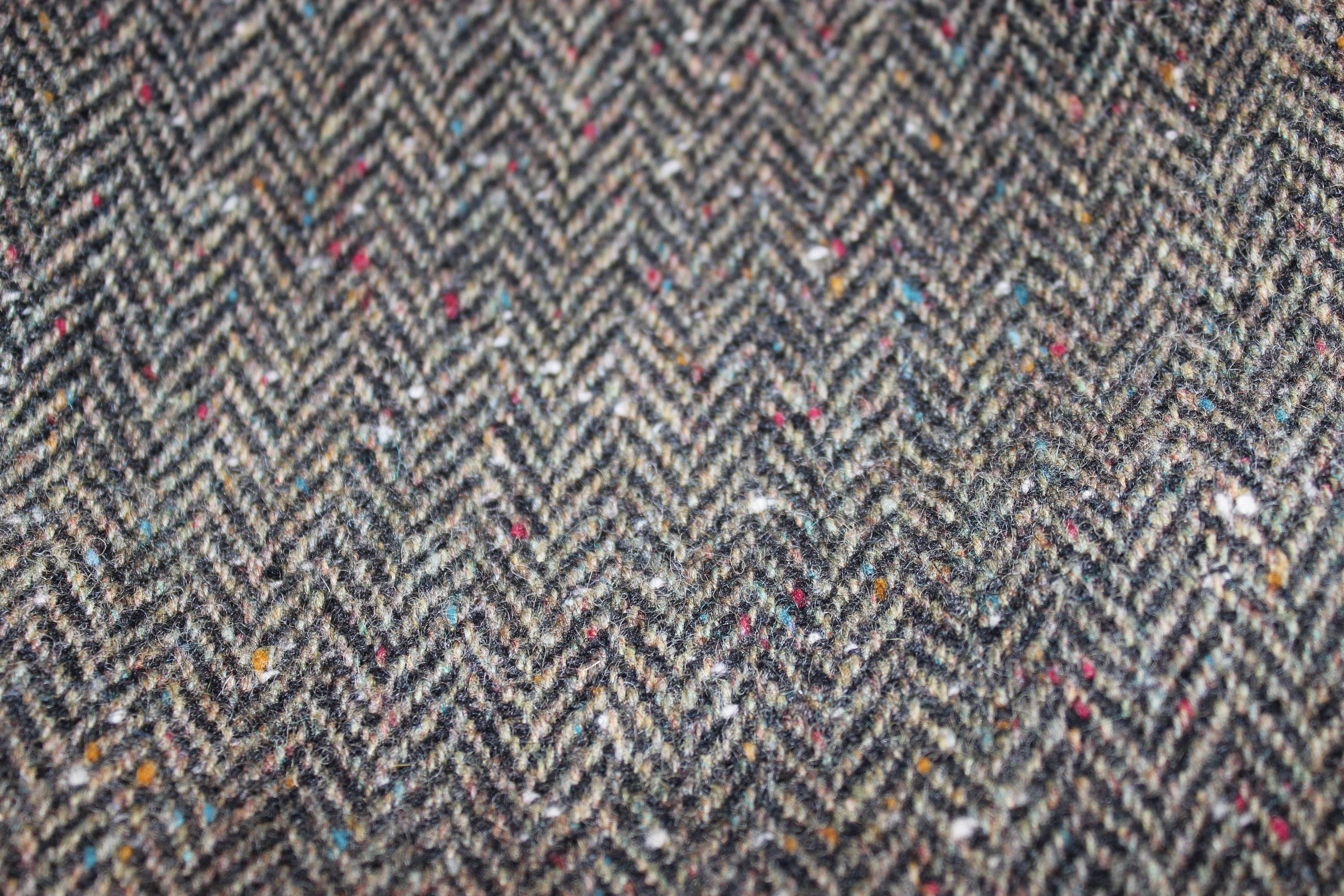Herringbone (cloth) on:
[Wikipedia]
[Google]
[Amazon]


 Herringbone, also called broken twill weave, describes a distinctive V-shaped
Herringbone, also called broken twill weave, describes a distinctive V-shaped

 Herringbone, also called broken twill weave, describes a distinctive V-shaped
Herringbone, also called broken twill weave, describes a distinctive V-shaped weaving
Weaving is a method of textile production in which two distinct sets of yarns or threads are interlaced at right angles to form a fabric or cloth. Other methods are knitting, crocheting, felting, and braiding or plaiting. The longitudinal ...
pattern usually found in twill
Twill is a type of textile
Textile is an Hyponymy and hypernymy, umbrella term that includes various Fiber, fiber-based materials, including fibers, yarns, Staple (textiles)#Filament fiber, filaments, Thread (yarn), threads, and d ...
fabric
Textile is an umbrella term that includes various fiber-based materials, including fibers, yarns, filaments, threads, and different types of fabric. At first, the word "textiles" only referred to woven fabrics. However, weaving is no ...
. It is distinguished from a plain chevron by the break at reversal, which makes it resemble a broken zigzag. The pattern is called herringbone because it resembles the skeleton
A skeleton is the structural frame that supports the body of most animals. There are several types of skeletons, including the exoskeleton, which is a rigid outer shell that holds up an organism's shape; the endoskeleton, a rigid internal fra ...
of a herring
Herring are various species of forage fish, belonging to the Order (biology), order Clupeiformes.
Herring often move in large Shoaling and schooling, schools around fishing banks and near the coast, found particularly in shallow, temperate wate ...
fish. Herringbone-patterned fabric is usually wool
Wool is the textile fiber obtained from sheep and other mammals, especially goats, rabbits, and camelids. The term may also refer to inorganic materials, such as mineral wool and glass wool, that have some properties similar to animal w ...
, and is one of the most popular cloths used for suits and outerwear
Outerwear is clothing and accessories worn outdoors, or clothing designed to be worn as protective layers outside other garments, as opposed to underwear. It can be worn for formal or casual occasions, or as warm clothing during winter.
List of ou ...
. Tweed cloth is often woven with a herringbone pattern.
Fatigue uniforms made from cotton in this weave were used by several militaries during and after World War II
World War II or the Second World War (1 September 1939 – 2 September 1945) was a World war, global conflict between two coalitions: the Allies of World War II, Allies and the Axis powers. World War II by country, Nearly all of the wo ...
; in US use, they were often called HBTs.
History
Various herringbone weaves have been found in antiquity: * A pair of woolen leggings found in the permafrost of the Italian-Austrian Alps have a 2:2 herringbone weave, dating to 800 to 500 BC. * A dark blue cloth with a 2:2 herringbone weave was found at Murabba'at Cave in Israel, from the Roman period. * A textile with a 2:2 herringbone weave was found at Pompeii, from 79 AD. * An illustration of a cloth having a herringbone weave from Antinoöpolis in Greece from 130 AD. * The Falkirk Tartan, a wool 2:2 herringbone tartan from around 240 AD. *Similar fabric fragments found atVindolanda
Vindolanda was a Roman auxiliary fort ('' castrum'') just south of Hadrian's Wall in northern England, which it pre-dated. Archaeological excavations of the site show it was under Roman occupation from roughly 85 AD to 370 AD. Located near th ...
, south of Hadrian's Wall in England.
See also
*Drill (fabric)
Drill is stout, durable cotton fabric with a strong bias (diagonal) in the weaving, weave.
It can be used unbleached, although it is more often Bleach (chemical), bleached or dyed.
Use in clothing
Light weight drill is used in clothing items ...
*Herringbone pattern
The herringbone pattern is an arrangement of rectangles used for floor tilings and road pavement, so named for a fancied resemblance to the bones of a fish such as a herring.
The blocks can be rectangles or parallelograms. The block edge lengt ...
* Moleskin
References
{{fabric Textile patterns